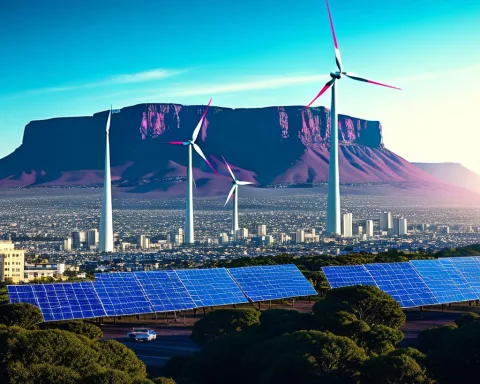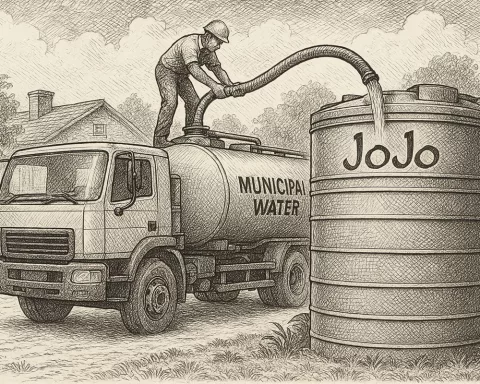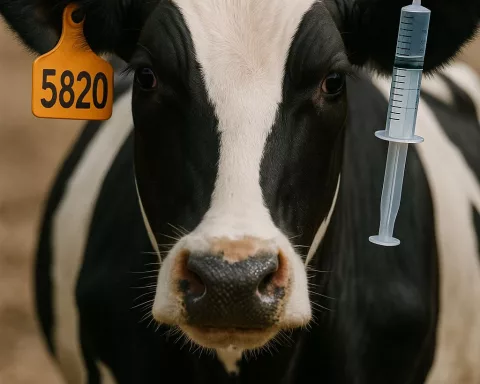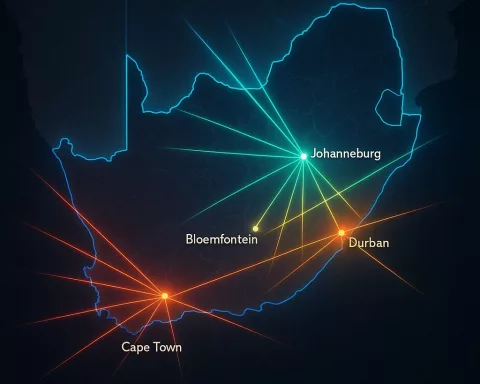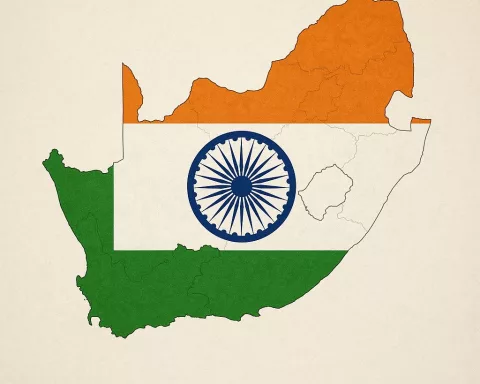Cape Town is building its first-ever freestanding elevated traffic circle, and it’s set to change how people move around the city! This exciting project aims to make travel smoother for MyCiti buses while keeping pedestrians and cyclists safe with their own special lanes. With bright, energy-efficient lights and smart traffic signals, it promises a safer, more efficient experience for everyone. As construction progresses, this new landmark symbolizes Cape Town’s commitment to a greener, more connected future, blending modern design with practical needs.
What is Cape Town’s elevated traffic circle project?
Cape Town’s freestanding elevated traffic circle is South Africa’s first of its kind, designed to improve urban mobility and reduce congestion. It prioritizes MyCiti bus service efficiency and enhances safety for pedestrians and cyclists, reflecting the city’s commitment to sustainable and innovative urban development.
A New Era in Urban Mobility
In the dynamic landscape of Cape Town, a pioneering project is underway that promises to revolutionize urban transportation. This endeavor, South Africa’s first freestanding elevated traffic circle, is poised to alleviate the long-standing congestion issues that have plagued the city. As construction progresses, this marvel of modern engineering begins to take shape, promising a significant enhancement in the city’s traffic flow.
The primary beneficiary of this elevated traffic circle is the MyCiti bus service, Cape Town’s leading public transport system. The design specifically accommodates these buses, allowing them to traverse the city with increased speed and reliability. Features like dedicated turning lanes and upgraded traffic signals are integral to this design, ensuring a smoother and more efficient journey for MyCiti buses. These improvements are expected to significantly reduce delays and boost the overall performance of the public transport network.
Enhancing All Modes of Transportation
Beyond its primary function of facilitating bus movement, the elevated traffic circle adopts a holistic approach to urban transport. It prioritizes the safety and accessibility of all road users, not just motorists. Separate lanes are designated for pedestrians and cyclists, making their journeys safer and more efficient. Enhanced street lighting further improves visibility during nighttime, addressing a critical aspect often neglected in urban planning.
This initiative mirrors Cape Town’s commitment to sustainable development. The upgraded infrastructure includes advanced sewage and water systems, as well as energy-efficient streetlights. These elements are a testament to the city’s forward-thinking approach, incorporating environmental considerations into urban development projects. The elevated traffic circle stands as a model of how modern infrastructure can blend practicality with sustainability.
Strategic Planning and Public Communication
The ambitious construction timeline, set at 44 months, reflects both the complexity and the scope of this project. The City of Cape Town has maintained proactive communication with the public throughout the construction phase. Clear advisories on upcoming lane closures, particularly at the intersection of Govan Mbeki Road and Jan Smuts Drive in Hanover Park, aim to minimize disruptions and maintain public trust.
Notably, the city has strategically scheduled lane closures outside peak hours to lessen the impact on traffic flow. This careful planning demonstrates Cape Town’s commitment to balancing infrastructure development with the everyday needs of its citizens. The high traffic volumes at the intersection, especially on weekends, underscore the necessity of such meticulous planning.
Councillor Rob Quintas, the City’s Mayoral Committee Member for Urban Mobility, has emphasized the multifaceted benefits of the project. In addition to facilitating MyCiti buses, the intersection itself is undergoing significant upgrades. Enhanced traffic signals and reconfigured turning lanes contribute to a substantial improvement in traffic management and overall vehicular movement.
An Urban Landmark in the Making
The elevated traffic circle is not merely an infrastructural addition; it signifies Cape Town’s vision for a more efficient, safer, and sustainable urban environment. The project’s ambition and scope resonate with historical and artistic movements that have sought to redefine public spaces. Just as the Bauhaus movement merged form with function in architecture and design, this traffic circle blends engineering prowess with urban utility.
Drawing parallels with iconic urban transformations, one can compare this initiative to Paris’s Haussmannian boulevards. These 19th-century developments reshaped Paris’s cityscape, enhancing both its aesthetic appeal and traffic flow. Similarly, Cape Town’s elevated traffic circle stands poised to redefine its urban narrative, blending practical utility with visionary foresight.
Imagine a future where Cape Town’s residents and visitors traverse this elevated structure. Picture MyCiti buses gliding smoothly along dedicated lanes, cyclists safely pedaling in designated paths, and pedestrians walking confidently, illuminated by energy-efficient streetlights. This vision, now steadily taking shape, promises to deliver a seamless blend of modernity and tradition—hallmarks of exceptional urban design.
A Broader Trend Towards Sustainable Development
This project also encapsulates a broader trend towards sustainable urban development observed globally. Cities worldwide are recognizing the imperative to balance growth with environmental stewardship. Cape Town’s elevated traffic circle aligns with this ethos, integrating advanced infrastructural improvements with sustainable practices.
One notable aspect of this project is its focus on improved sewage and water infrastructure. This forward-thinking approach to urban planning is reminiscent of ancient Roman aqueducts, which combined engineering ingenuity with essential public utility. While Cape Town’s initiative is technologically advanced, it carries the same spirit of enhancing urban life through thoughtful infrastructure.
In the grand tapestry of Cape Town’s urban evolution, the freestanding elevated traffic circle represents a significant thread. It weaves together elements of safety, efficiency, sustainability, and innovation, creating a coherent narrative. This project stands as a monument to what modern urban planning can achieve when guided by a vision that respects both present needs and future aspirations.
Cape Town’s freestanding elevated traffic circle is more than just a construction project; it is a symbol of progress and a beacon of modern urban mobility. It underscores the city’s commitment to improving the quality of life for its residents through efficient, sustainable, and safe transportation. As construction continues, Cape Town moves closer to a future where these aspirations become reality.
In essence, this groundbreaking initiative reflects the city’s dedication to integrating engineering excellence with sustainable urban development. It stands as a testament to what can be achieved when modern infrastructure projects prioritize both practical utility and visionary foresight. Cape Town’s elevated traffic circle is not just a new addition to the cityscape; it is a landmark that signifies a brighter, more efficient future for urban mobility.
FAQ about Cape Town’s Elevated Traffic Circle Project
What is Cape Town’s elevated traffic circle project?
Cape Town’s freestanding elevated traffic circle is South Africa’s first of its kind, designed to improve urban mobility and reduce congestion. It prioritizes the efficiency of MyCiti bus services while enhancing safety for pedestrians and cyclists, reflecting the city’s commitment to sustainable and innovative urban development.
How will the elevated traffic circle improve public transport in Cape Town?
The elevated traffic circle will specifically benefit the MyCiti bus service by providing dedicated turning lanes and upgraded traffic signals, allowing for increased speed and reliability. This design is expected to significantly reduce delays and enhance the overall performance of Cape Town’s public transport network.
What safety measures are included in the design of the traffic circle?
The traffic circle incorporates separate lanes for pedestrians and cyclists, ensuring their safety and accessibility. Additionally, enhanced street lighting will improve visibility during nighttime, addressing a critical aspect of urban safety. These features are part of a holistic approach to urban transport that prioritizes all road users.
How long will the construction of the elevated traffic circle take?
The complete construction timeline for the elevated traffic circle is set at 44 months. The City of Cape Town has committed to proactive communication with the public regarding lane closures and traffic impacts, particularly at high-traffic intersections.
What environmental considerations are included in the project?
The elevated traffic circle project includes advanced sewage and water systems and energy-efficient streetlights, reflecting Cape Town’s commitment to sustainable development. This approach not only enhances infrastructure but also integrates environmental considerations into urban planning.
How does this project align with global trends in urban development?
Cape Town’s elevated traffic circle exemplifies a broader trend towards sustainable urban development, similar to initiatives in cities worldwide. By balancing growth with environmental stewardship, the project aims to enhance urban life through thoughtful infrastructure, reminiscent of historical advancements in urban planning.



